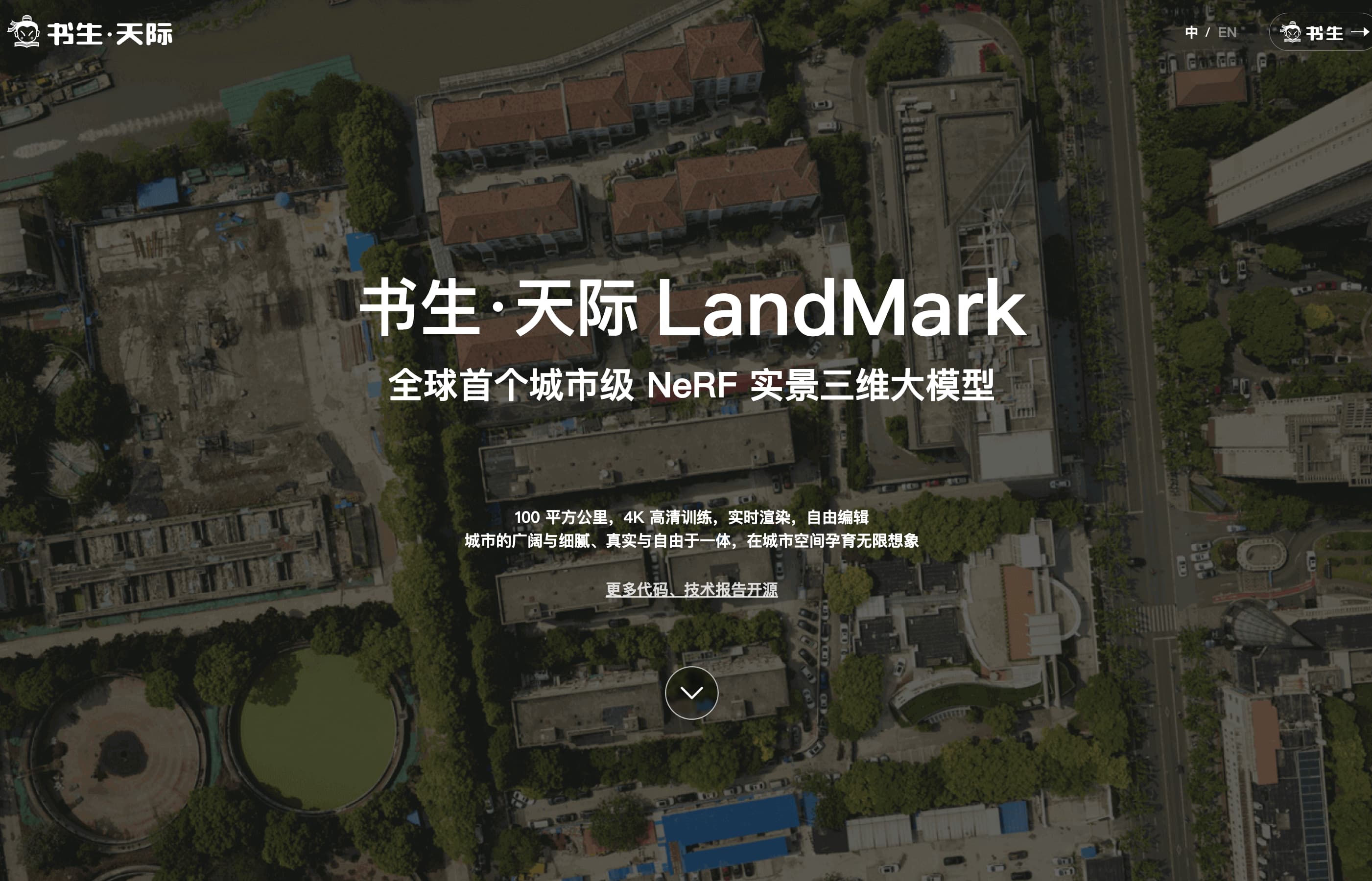

Shusheng: Skyline LandMark
Overview :
Shusheng: Skyline LandMark is a real-world 3D model based on NeRF technology, achieving 4K HD training over an extensive area of 100 square kilometers, with capabilities for real-time rendering and free editing. This technology represents a new pinnacle in city-scale 3D modeling and rendering, boasting high efficiency for training and rendering, making it a robust tool for urban planning, architectural design, and virtual reality.
Target Users :
Target audience includes urban planners, architects, designers, game developers, and virtual reality content creators. They can utilize Shusheng: Skyline for urban space simulation, design validation, visual effect presentation, and interactive experience development.
Use Cases
Urban planners use Shusheng: Skyline for simulating new district planning.
Architects utilize the model for visual validation of architectural designs and client presentations.
Game developers create virtual reality city exploration games based on this model.
Features
Extensive and high-precision modeling: Achieved efficient training of city-scale NeRF with 4K image fidelity over 100 square kilometers.
Real-time and high-precision rendering: Supports real-time rendering at 1k resolution at 30 frames per second across the full 100 square kilometers and offline rendering at 4K resolution.
Rich extension functionalities: Includes capabilities for editing urban buildings' attributes such as removal, addition, rotation, and variations in lighting and seasonal styles.
Integrated training, rendering, and interaction system: Provides a solid foundation for training, rendering, interactions, and applications.
Immersive experience: Offers an engaging travel experience through real-time rendering technology.
Open-source code and technical reports: Enables community and developer participation and contributions.
How to Use
1. Visit the official website of Shusheng: Skyline LandMark.
2. Familiarize yourself with the main features and functionalities of the product.
3. Download and install the necessary software or plugins to utilize the model.
4. Choose the appropriate urban area for modeling and rendering based on your needs.
5. Use the provided editing tools to remove, create, or rotate buildings as needed.
6. Adjust lighting and seasonal settings to simulate different urban styles.
7. Experience immersive traversal effects through real-time rendering technology.
8. Participate in the community to gain technical support and share experiences.
Featured AI Tools
English Picks

Luma AI
Luma AI is an AI-focused technology company that enables users to quickly generate 3D models using their phones through its innovative technology. Founded by a team with extensive experience in 3D computer vision, Luma AI's technology is based on Neural Radiance Fields, allowing for 3D scene modeling from a limited number of 2D images. Dream Machine is an AI model capable of directly generating high-quality, realistic videos from text and images. It is a highly scalable and efficient transformer model trained specifically for video, capable of generating physically accurate, consistent, and event-filled shots. Dream Machine represents the first step toward building a universal imagination engine, now accessible to everyone.
3D Modeling
3.6M

Mootion
Mootion is an AI-native 3D creation platform dedicated to unleashing creativity for everyone in the digital realm. It transforms professional workflows into universal and user-friendly processes. Mootion aims to build an AI-powered creative hub encompassing 3D, video, animation, and game development, serving as a platform for inspiration, sharing, and collaboration.
3D Modeling
489.6K

















